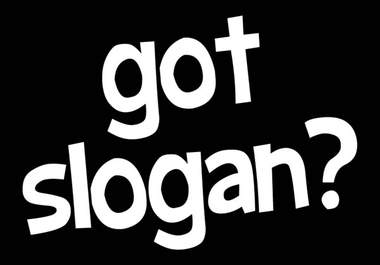You can translate a slogan easily, ask your translation provider, translate it literally and voila; slogan done you would say. However a lot more aspects should be taken into consideration to make your slogan appealing instead of just simply translating it.
The creation of a slogan is more than just your key USP, it should be appealing for your target group, it should be in harmony with what your company stands for and it should sound good . All aspects are meant to attract the target group. They will remember it and want to run to the store (or in this time period, go online) and buy the product. One slogan could create massive increase in sales in one country, but could fail in another. Therefore a short update on the Do’s and Don’ts is necessary before every translation.

DO:
First of all a business should look at the values of a culture. Some cultures are keener on cheap products, for OK quality, others like to have higher quality products but more expensive. The way on how to approach your target group depends on the way culture is valued in a country. For example, targeting one single person in Western European countries is appealing for a single individual, while targeting one single person in Asian countries, won’t be appealing because of the high collectivism in Asian countries. You’re not an individual, you’re a group. An example in the case would be the telecom provider Orange. They introduced their international slogan “The future is bright, the future is Orange in Ireland. Not a big deal a non Irish person would think, but take into consideration that orange is the color Orange Order: a protestant movement in the North of Ireland. Don’t think the Catholic Irish population is very happy to buy Orange Products now.
DON’T:
Just translate your slogan. First do research on the country, and if you choose to go for translation, it can happen that your slogan is hard to translate. The literal translation will result in sounding bad, a no-clue sentence that would not attract anybody. The company has to think it over. A good tip is always to connect with locals, they can provide you with more information than your company can do research on. There have been multiple advertising mistakes in the past simply because of the lack of research and knowhow in the target country. You want to avoid situations where the meaning of “Turn it loose” means: “Suffer from Diarrhea”. This happened to Coke producer Pepsi when translating their slogan into Spanish, without having it checked by a Spanish native.
DO:
Look at the use of your product in other countries. Products can be used differently, for different purposes. If you don’t know how it’s going to be used, you can make big mistakes when creating/translating your slogan. Take for example Mac Donalds, in some countries it is seen as a fast food restaurant to eat something quickly while in China Mac Donalds is a favorite place to go to on a date, because it is one of the few places where tables are available with only two seats. These things should be taken into consideration when creating a slogan.
In conclusion, think very well about your slogan before you just simply translating it. Luckily there are translators available who are able to localize your slogan, they are able to add value to your slogan because they are most of the time native speakers of the target language and are therefore accustomed to the habits and cultural values in your target country. Sometimes it’s even better to not translate your slogan. Good translators would mention that to you and make sure the Slogan will create success!
To read: top 13 worst slogan translations ever
Annefleur De Vries













